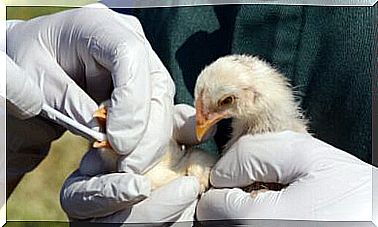Spurred Toads: Types, Habitat And Characteristics
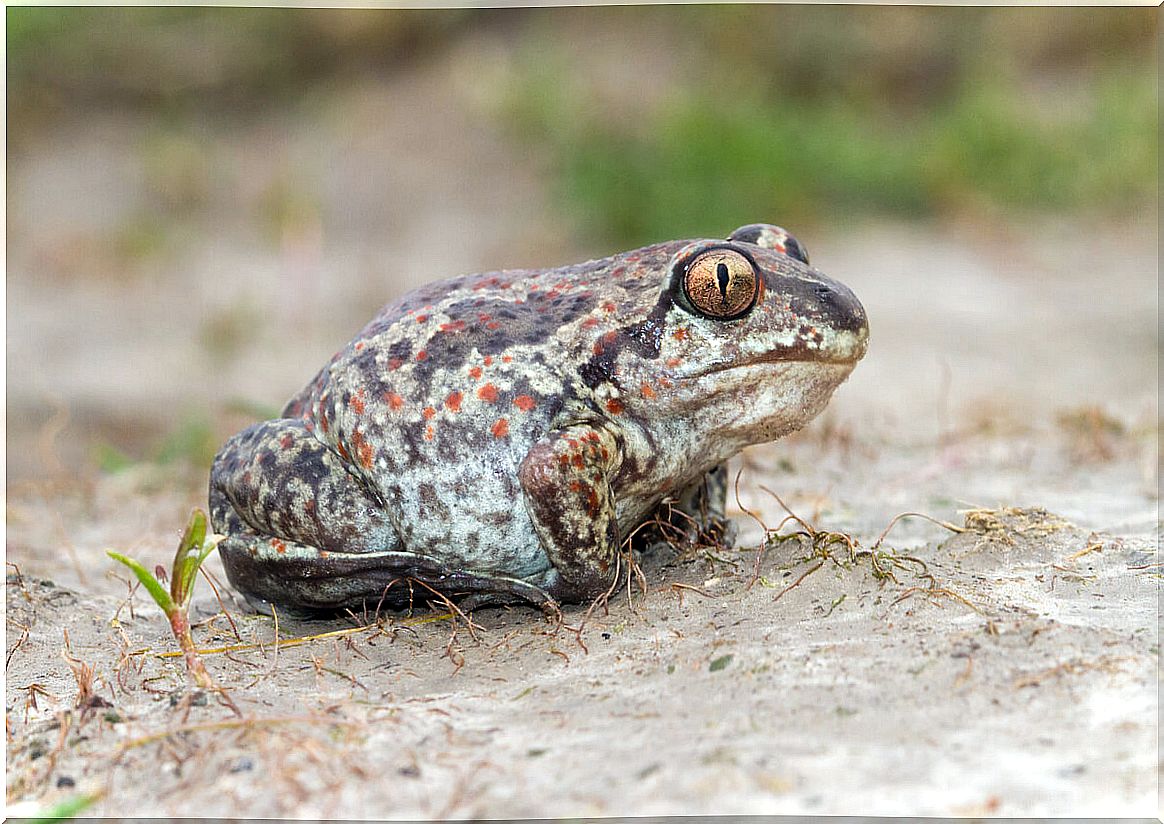
Anurans are tailless amphibians, whose hind legs are normally longer than the front legs. These include toads and frogs and are some of the oldest animals on the planet, with numerous species highly variable from one another. A very interesting – but usually overlooked – group of anurans are the spurred toads.
These small animals share characteristics with all other anurans, but they have certain traits that differentiate them from others. If you want to learn more about these amphibians and their habits, read on.
The spur toads: an informal group
Traditionally, all spurred toads have been included in the same group, due to the large number of similarities they share. However, after molecular studies, it has been concluded that there are 2 different families of spur toads, which are not very closely related to each other.
The Pelobatidae family includes the Old World or European spur toads. There are only 6 species, all of them belonging to the genus Pelobates . They are present in Europe, North Africa and West Asia. In Spain, the representative of this clade is Pelobates cultripes.
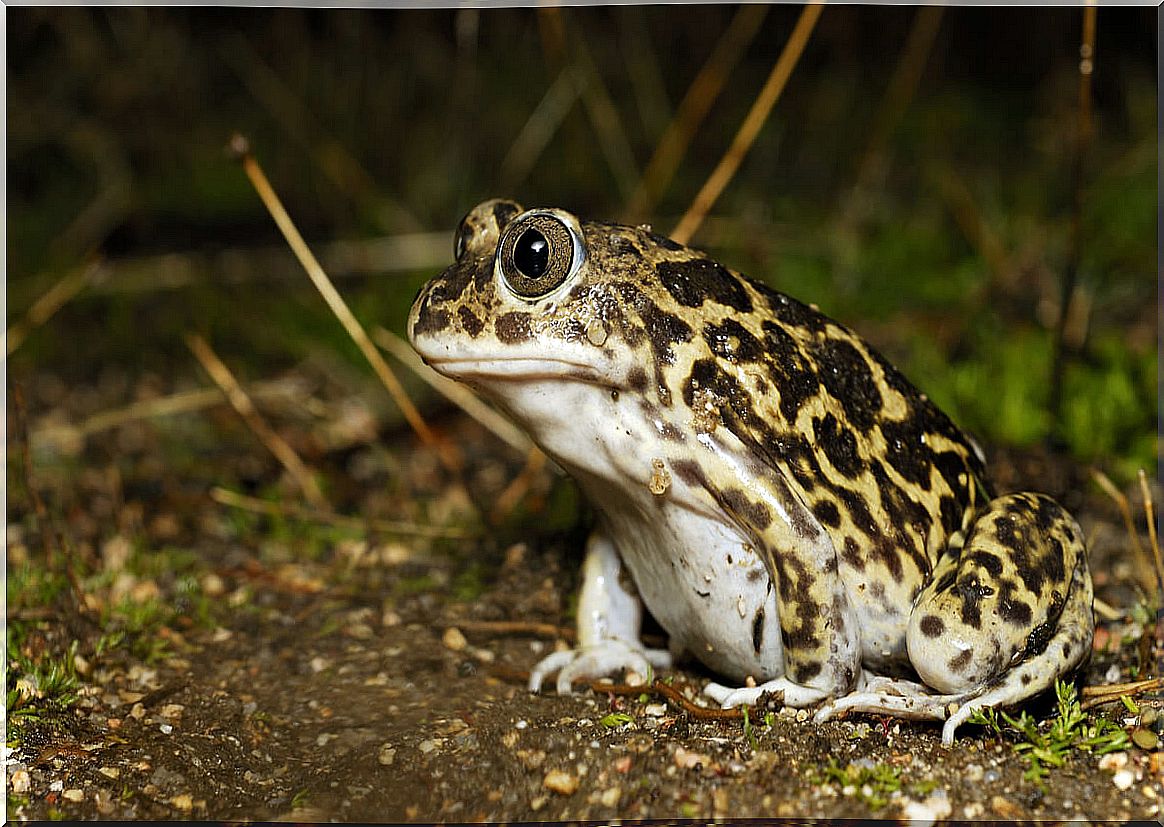
The family Scaphiopodidae includes the New World or American spur toads. It is divided into 2 genera, which are called Western spur toads (genus Spea ) and southern spur toads (genus Scaphiopus ). They encompass the scarce number of 7 species between them and are distributed from southern Mexico to southern Canada.
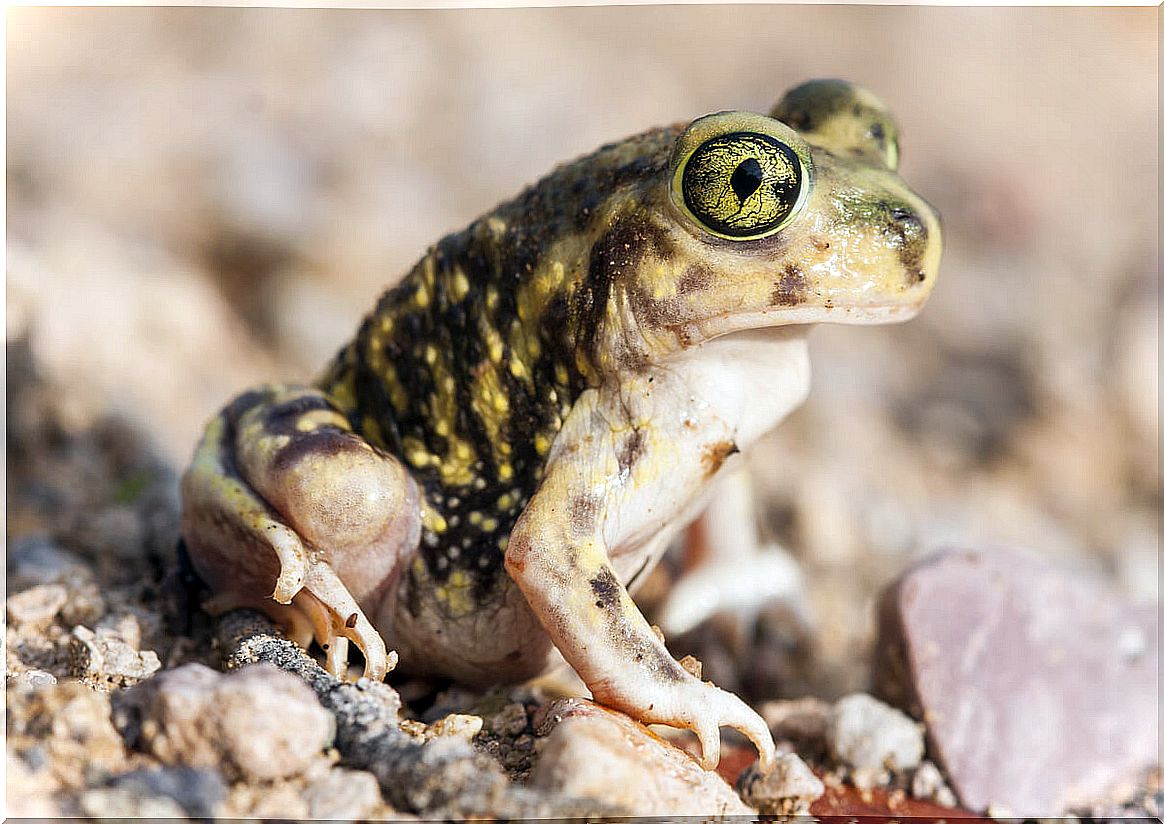
Although less common, some species in the Megophryidae family have also received this name. These amphibians inhabit Asia and are very different from the previous ones. Some of them, like Megophrys nasuta , have horn-like or spike-like structures on top of their eye structures.
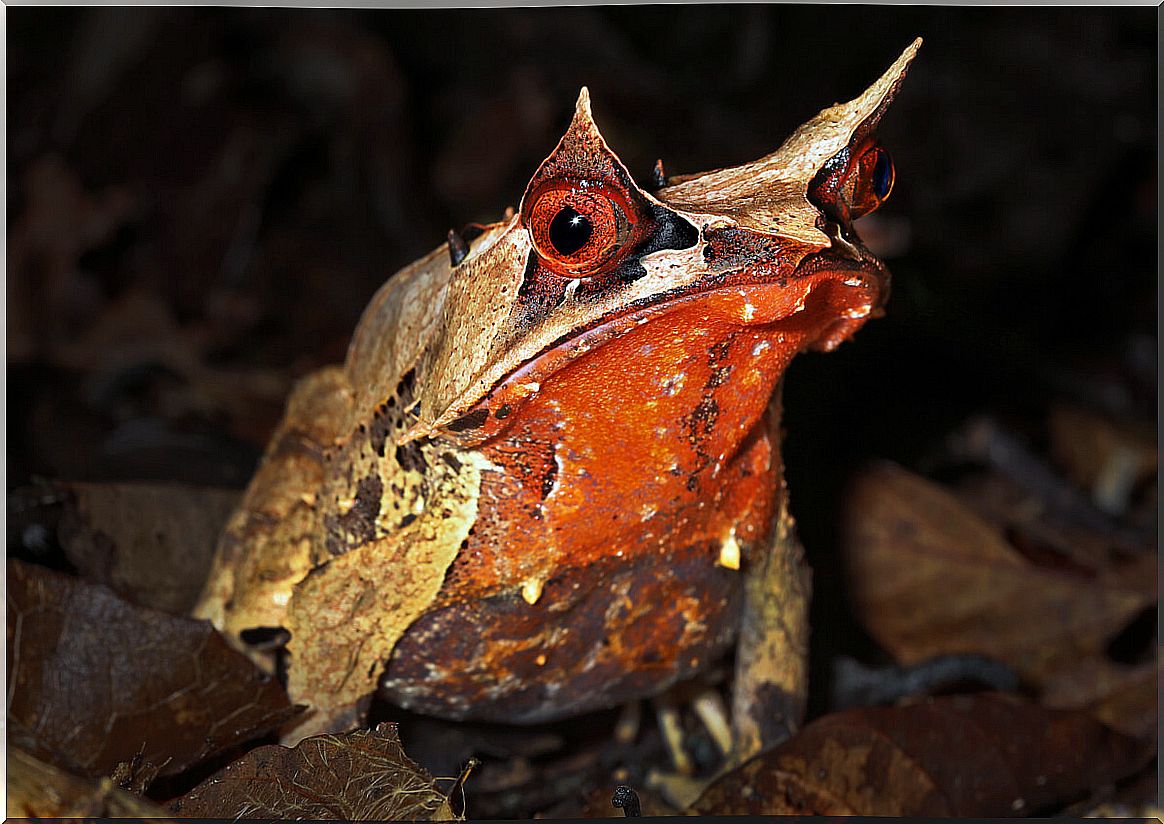
Due to the diversity presented here, it can be concluded that the spurred toads are not a natural group, but rather an informal name used to speak of superficially similar animals.
Characteristics of spurred toads
As mentioned, most of these amphibians are very similar to each other. They are plump, of medium size, with short, sturdy legs. They have ocher, gold, brown and dark colors. In addition, their eyes are bulging, large and striking, with golden irises.
Unlike other toads, their skin is smooth and lacks the typical warty-looking glands. They also do not have the large parotid glands that other toads have behind their heads. In addition to all this, they lack visible vocal sacs and eardrums.
Of course, its most representative characteristic is the one that gives its name to the spur toads. They have keratinized and hard thickenings on the hind legs, which are called spurs or spurs. They can be black or white depending on the species and are used for digging, which gives clues about their way of life.
Thanks to their spurs, these toads are capable of digging in reverse, burying themselves vertically to depths of up to 60 centimeters. For this reason, they spend most of their lives underground and only come to the surface at night during rainy periods, to reproduce explosively in temporary pools.
During their period of activity, these small anurans feed on a wide variety of invertebrates, such as insects, gastropods or annelids. They are not skilled predators, so they wait for their prey to pass in front of them before pouncing.
Larval stage
Like the vast majority of anurans, these toads have an aquatic larval stage, in which they are called tadpoles. The larvae of the spurred toads are very interesting — albeit for different reasons — in the old and new world species.
American tadpoles have one of the shortest metamorphosis processes of all amphibians, less than 14 days. Even more remarkable is that they present 2 different morphotypes, as we will see below.
While normal tadpoles are omnivorous and remain grouped together, some of them develop a different morphology, with enlarged jaws and larger sizes.
These are solitary and exclusively carnivorous, feeding on crustaceans and other tadpoles. Interestingly, carnivorous tadpoles can revert to the omnivorous morphotype when they stop preying on other animals.
On the other hand, European spur toad tadpoles have much longer metamorphosis periods, which can last for several months. Therefore, they are capable of reaching enormous sizes, up to 15 centimeters.
Habitat and conservation status
Spade Toads prefer sandy soils — which allow them to burrow more easily — and are generally associated with arid or semi-arid ecosystems. This includes desert areas, fields, scrub areas, and forests, among others.
While most species of American spur toads are in an optimal state of conservation, their European representatives are not experiencing the same fate. Their populations are declining in a generalized way and, in addition, some of their species are classified as vulnerable or in danger of extinction.
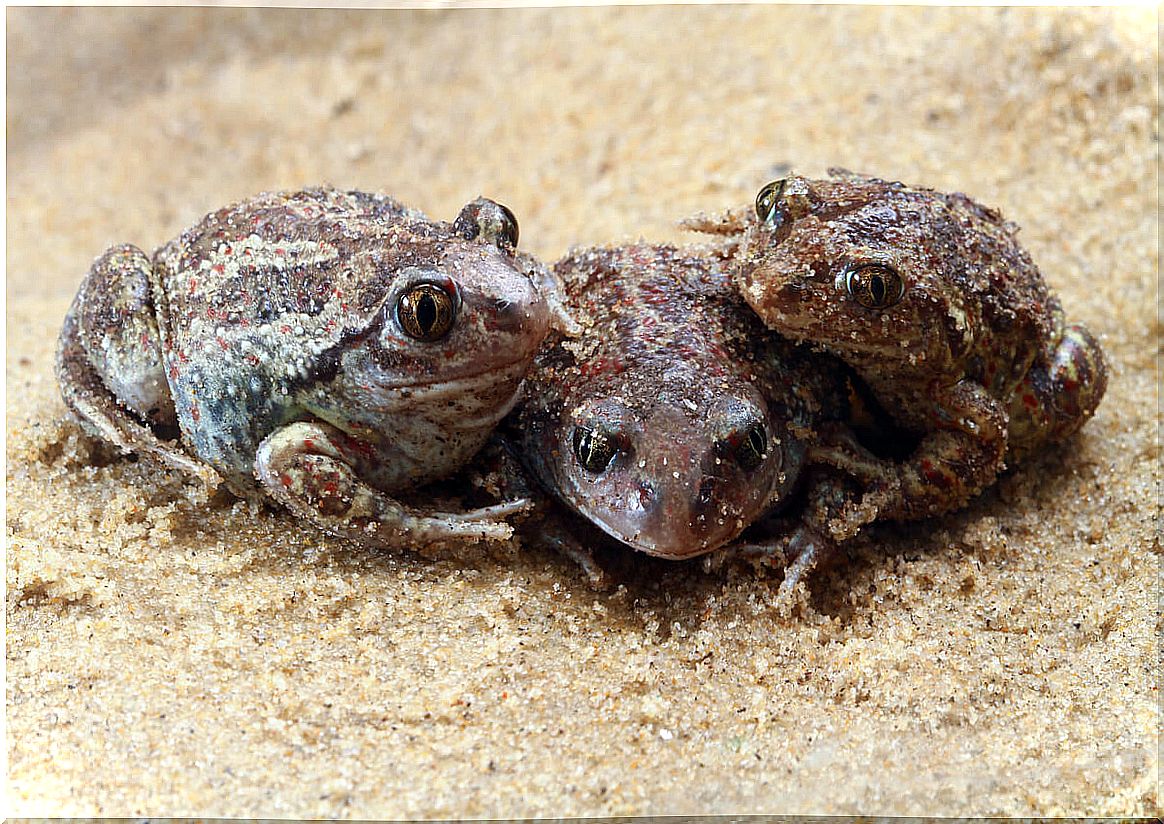
Some of their current threats are the use of pesticides and chemical fertilizers, changes in land use, the destruction of their habitats and the introduction of invasive alien species.
Although inconspicuous and often imperceptible to humans, these amphibians form an important part of their ecosystems. For this reason, they must be known, appreciated and preserved.









